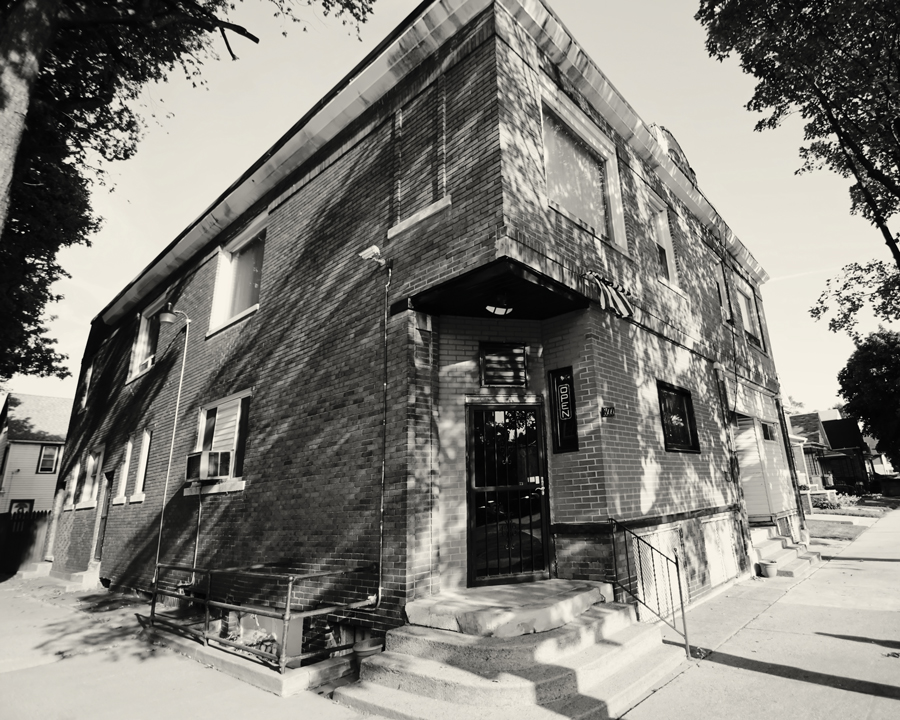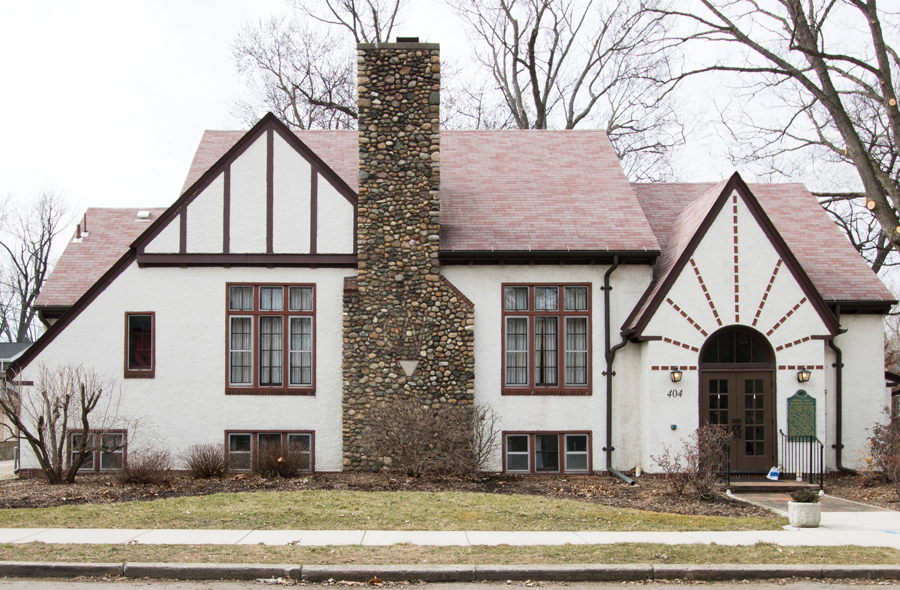Part of our 2017 City Guide, Hidden Detroit

Abick’s is a Real Prohibition Find
If you spend any time looking into Prohibition-era Detroit history, you’re bound to encounter some wild rumors. In most cases, sadly, that’s all they turn out to be: hand-me-down tales of yore from someone’s grandfather’s cousin’s buddy.
If the Purple Gang had spent as much time slinging cocktails at local bars as some Detroiters claim, those notorious crime lords wouldn’t have had nearly enough time for their smuggling or racketeering operations.
And sometimes, sadly, a tunnel is just a tunnel.
That’s why it’s especially exciting to come across a new find at an old haunt.
Last fall, while making repairs to the plumbing in the men’s room, Eric Lakeman, owner of Abick’s Bar in southwest Detroit, stumbled on a removable panel. That panel opened up to reveal a crawl space no one recognized, an impressive find for a bar that’s been around since 1907.
Buried under a century’s worth of dust and old bottles and crates were two barrels bearing indiscriminate charcoal scribbles.
One of them still has whiskey in it.
Unfortunately, excavating the barrels would require hoisting up a good chunk of the building. So for the time being they’ll have to stay exactly where they are.
And while setting an exact date on the whiskey barrels is as tricky as finding a liquor historian brave enough to crawl into the suffocating breadbox-sized opening, it’s safe to say that the barrels are old. Very old, in fact. Distribution and bottling laws ensured that by 1933, the whiskey that went to bars came in bottles, not barrels.
To whiskey aficionados who fork up thousands of dollars for a bottle of 23-year-old bourbon, there’s no telling what the treasure beneath Abick’s might be worth. It could be the greatest whiskey ever aged, tucked away in that dark tunnel; it could also be swill.
Not everything improves with age, but a good bar, like a well-tended whiskey, does. At Abick’s, even if you can’t sip from the found barrels, you can at least savor the knowledge that some mysteries are still waiting to be uncovered. — Mickey Lyons
3500 Gilbert St., Detroit; 313-894-9329

Signs of Significance
Lesser-known historical markers give insight into metro Detroit’s past
Battle of Bloody Run
The deadliest battle of Chief Pontiac’s uprising was fought in July 1763. The battle, which resulted in the death of British Captain James Dalyell and as many as 60 of his solders, is considered the climax of Pontiac’s uprising. 3321 E. Jefferson Ave., Detroit
Blossom Heath Inn
Built in 1911 as the Kramerhof roadhouse, the building was sold in 1920 and renamed Blossom Heath Inn. National big bands performed at the space, which was known for illegal drinking and gambling during Prohibition and the Depression. 24800 Jefferson Ave.,St. Clair Shores
Hamtramck Stadium
The Detroit Stars was one of the eight Negro National League charter teams. After a fire damaged the team’s Detroit-based grounds in 1929, the owner built Hamtramck Stadium. Norman “Turkey” Stearnes, “Cool Papa” Bell, and “Smokey Joe” Williams are among the stadium’s National Hall of Famers. Veterans Memorial Park, Hamtramck
Holcombe Beach
In 1961, archeologists from the Aboriginal Research Club and the University of Michigan discovered evidence of an early Paleo-Indian settlement at this site, which existed nearly 11,000 years ago. Dodge Park, Sterling Heights
Police Dispatch Radio
The Detroit Police department started experimenting with radio-equipped cars in 1921. In April 1928, the police radio operators broadcast on a dedicated frequency for the first time from the Belle Isle-based police station. Belle Isle, Detroit
Port Huron to Mackinac Race
The first 261-mile sailing race from Port Huron to Mackinac Island took place in 1925. After the U.S. entered World War II, organizers wrote to President Roosevelt to ask if the race should be suspended, and received a response that the continuation of yachting was encouraged by the Navy. 100 Clairpointe St., Detroit
Royal Oak Woman’s Club
Recognized as the oldest building in Royal Oak, the Royal Oak Woman’s Club space was built in 1839 and was originally home to a small Baptist Church. It also briefly served as a town hall for the city. 404 S. Pleasant St., Royal Oak
Seabiscuit
In September 1936, Seabiscuit, a thoroughbred now known as one of the greatest racehorses of the 20th century, won the Governor’s Handicap and the Hendrie Handicap at the Detroit Fairgrounds. It was the beginning of a winning streak. State Fairgrounds, Detroit
Find more Michigan Historical Markers at michmarkers.com.

If you build it…
For better, or in some cases, worse, we’re always building something
Build a ‘Highway’ (circa 1816)
Think the Woodward Cruise is a relatively new pathway? Think again. It runs roughly along the Saginaw Trail, an Indian path that ran from Detroit to Saginaw. In 1816, the Michigan Territorial government authorized a road, in part, along modern-day Woodward Avenue and Dixie Highway. You can see remnants of the path. There’s a visible depression near the John Almon Starr House, now home to the Chisholm & Shuttie law firm. 3123 Crooks Rd., Royal Oak
Build A Canal (circa 1837)
Mount Clemens almost became a huge city. Spurred by the success of the Erie Canal, Michigan’s “boy governor” Stevens T. Mason proposed a Clinton-Kalamazoo Canal to run from the Clinton River west through Howell and connect to the Kalamazoo River. Think of it as a shortcut across the Great Lakes State to bypass the long, often dangerous route through the Straits of Mackinac. Money woes and politics got in the way, and only 16 of the proposed 216-mile route ever got started. Remnants are visible along Canal Road in Clinton Township, River Bends Park, and Bloomer Park.
Build A Bathhouse (circa 1890)
By the turn of the century, Mount Clemens was a hotbed (pun intended) after the discovery of mineral water wells. By 1911 the city boasted some 78 hotels and 11 bath houses to cater to people seeking relief from diabetes, skin diseases, or rheumatism. One remaining building is the former Saint Joseph Sanitarium and Bath House. Opened in 1899, it offered mineral baths until 1952. Today, it’s part of Henry Ford Macomb Hospital. 215 North Ave., Mount Clemens
Build a Wall (circa: 1940s)
Detroit’s record on race relations isn’t exactly stellar, but in the late 1930s and early 1940s, racism was blatant — and government-sanctioned. A physical manifestation is still evident in the Eight Mile-Wyoming area where an established black neighborhood was deemed to be in the path of “progress.” A developer worked out a deal with the Federal Housing Administration to build an all-white subdivision nearby. The solution? A half-mile-long, foot-thick, 6-foot-high cement wall between Birwood and Mendota streets to separate the races. Nicknamed the “Wailing Wall” or “Birwood Wall” (evoking the Berlin Wall), it’s still there as a reminder of the bad old days (although graffiti artists recently made it more inviting). You can see it from the Alfonso Wells Memorial Playground off Griggs Avenue between Wyoming Avenue and Meyers Road.
Build A Missile Site (circa 1950s)
During the 1950s, the U.S. Army’s Nike anti-aircraft program was the “last line of defense” against a feared Soviet attack. There’s an abandoned Nike Missile radar tower at Alfred Brush Ford Park just upriver from Belle Isle. At one point, there were more than a dozen such sites, including in Utica, Grosse Ile, Riverview/Wyandotte, and Rouge Park. There’s also a site listing Nike locations in Cleveland and Detroit at nikehercules.tripod.com.
Events
Behind the Scenes Tours
Date: Throughout the year
Behind-the-scenes weekly tours by the Detroit Historical Society give a view of iconic locations like The Benson Ford Research Center, Detroit Boat Club, and Shinola Corporate Headquarters. detroithistorical.org
Local History Conference
Date: Early spring
Presentations, exhibitors, and more geared toward state or regional history buffs. This year’s conference in March featured presentations on the Detroit Tigers and the state as a political battleground. hsmichigan.org
The Commandant’s Quarters
Date: Summer weekends
The Commandant’s Quarters at the Dearborn Historical Museum opens to the public. There are period furnishings and a scale model of the city’s old Arsenal grounds. thedhm.com
|
|
|










